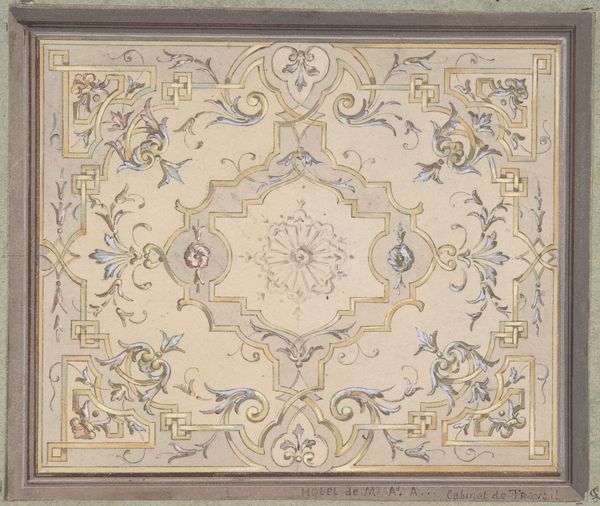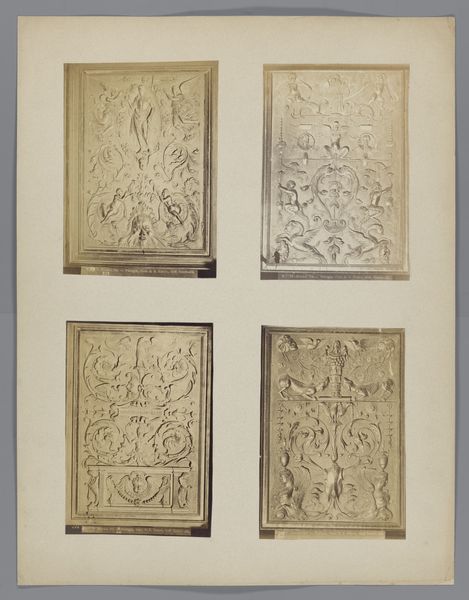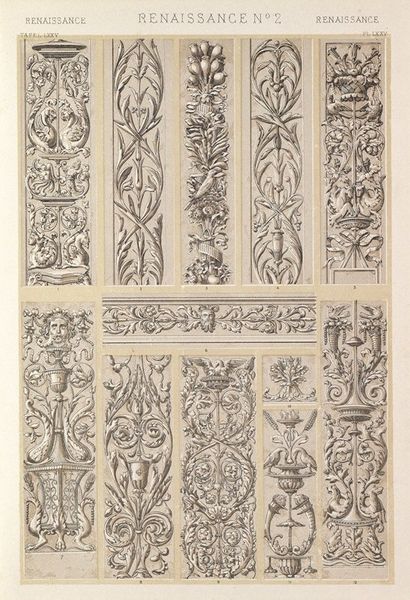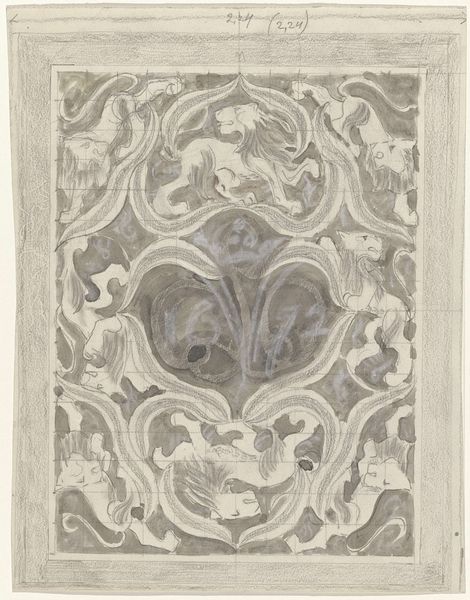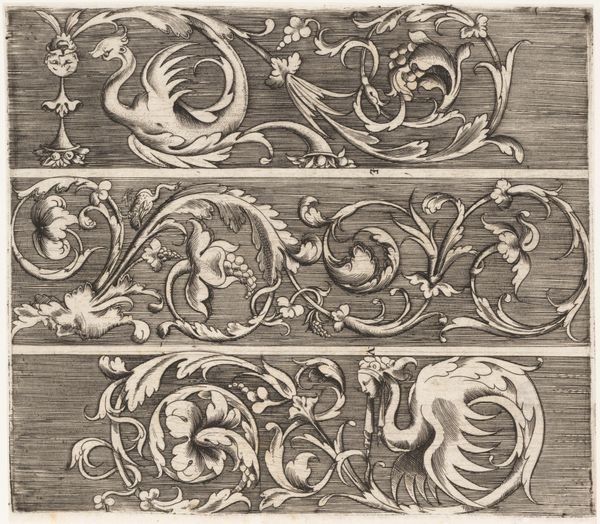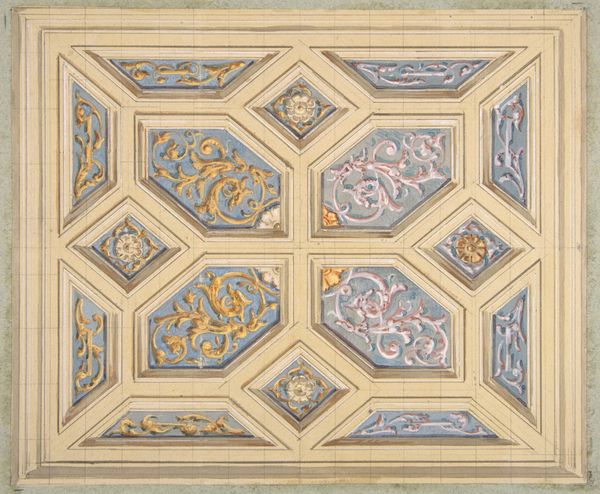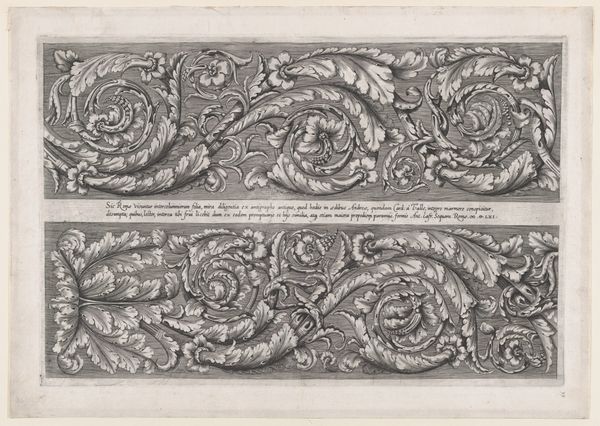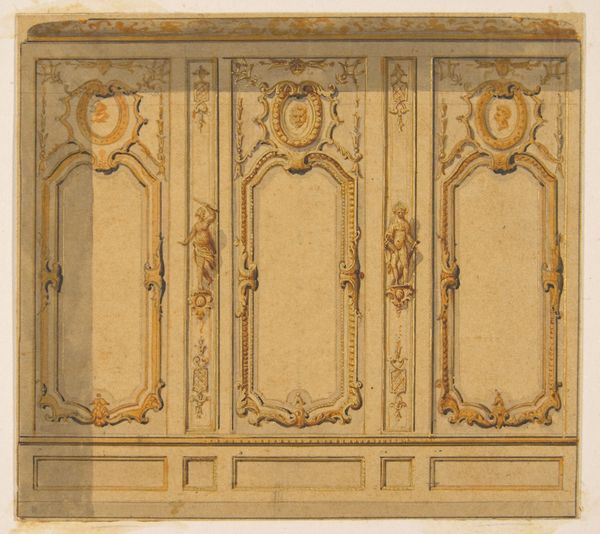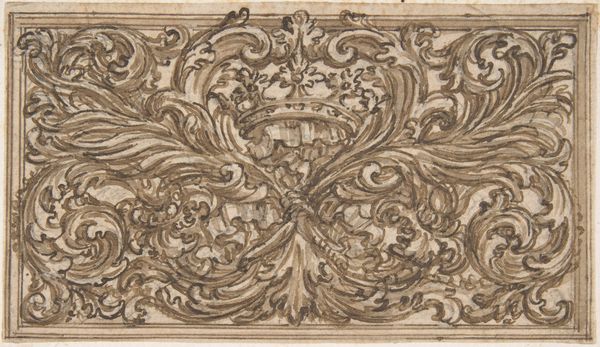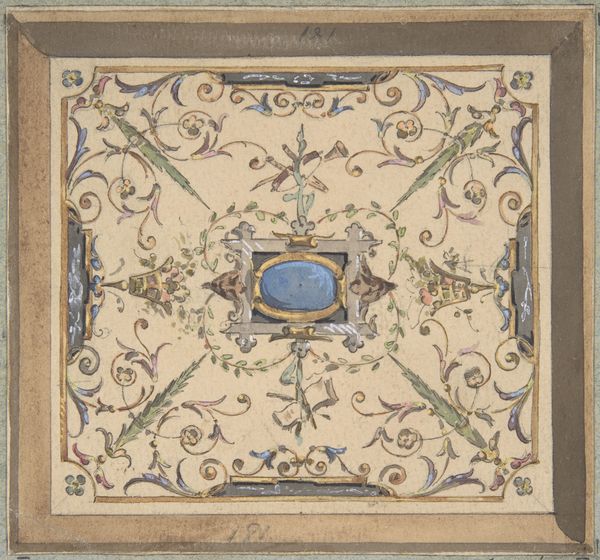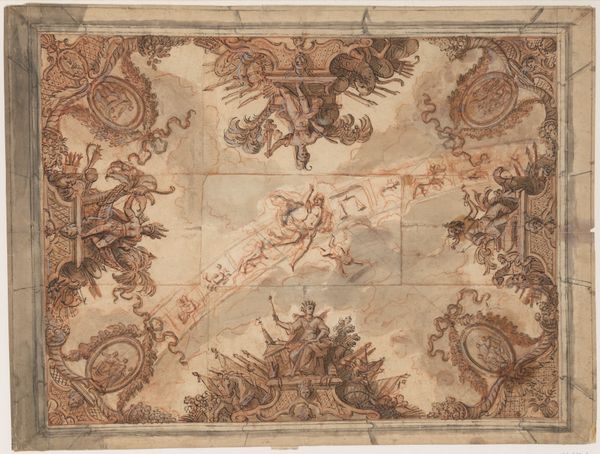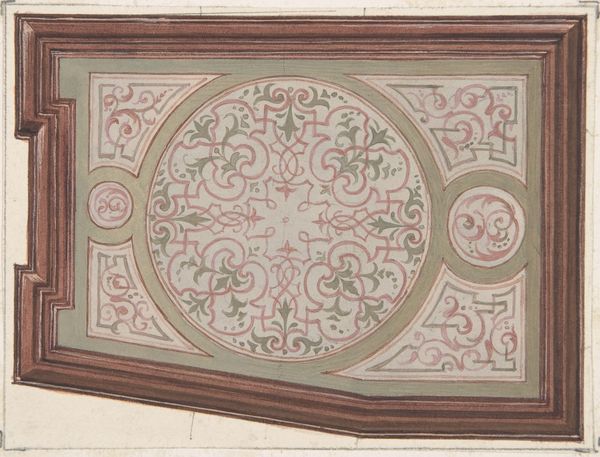
drawing, print, etching, intaglio
#
drawing
#
allegory
#
baroque
# print
#
etching
#
intaglio
#
figuration
#
form
#
11_renaissance
#
nude colour palette
#
line
#
nude
Dimensions: sheet: 10 5/16 x 6 7/8 in. (26.2 x 17.5 cm)
Copyright: Public Domain
Curator: These are the “Four Panels with Rinceau Motif,” created by an anonymous artist in the 17th century. They're currently held here at the Met. It's an etching, enhanced by ink and wash, an example of intaglio printmaking. Editor: Intaglio, you say? My first impression is one of intricate fantasy. The figures feel almost suspended within the swirling foliage, yet there's also something unsettling about the lack of clear grounding. Curator: It’s a window into the aesthetic priorities of the Baroque period, wouldn’t you say? Ornamentation was paramount; these panels exemplify the period’s dramatic flair, a deliberate rejection of Renaissance simplicity, a sort of maximalism that speaks to power. Editor: I can't help but see echoes of our contemporary obsessions too. Think of the cultural debates around "perfection" and representation in advertising. Aren't these figures, idealized and seemingly detached from reality, perpetuating similar unrealistic expectations of beauty? Curator: I agree, the bodies depicted do seem intentionally aloof from the natural world, posed in impossible arrangements amidst decorative scrolls. Remember, too, this artwork exists within an ecosystem. How did the burgeoning market for prints in the 17th century influence these aesthetic choices? Was this piece created for private contemplation, to adorn some wealthy person's studio? Editor: Perhaps both? It could easily hang in a domestic setting, even now. These panels were surely speaking to power and privilege through their depiction of leisure and plenty. Where do we draw the line between decoration and coded communication? And is it possible that, even today, visual culture serves those exact same social functions? Curator: It is amazing how historical artistic gestures may transcend its own context. Thanks for unveiling all these possibilities that lies beyond conventional analysis. Editor: My pleasure, art should open dialog beyond disciplines!
Comments
No comments
Be the first to comment and join the conversation on the ultimate creative platform.
